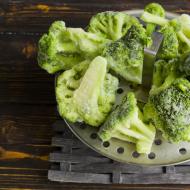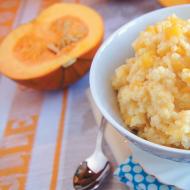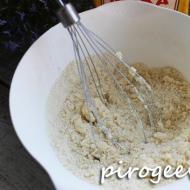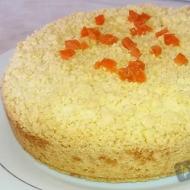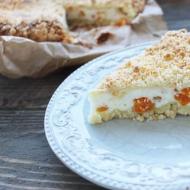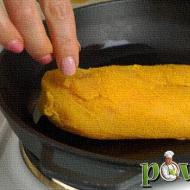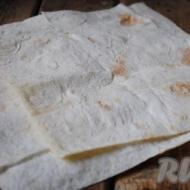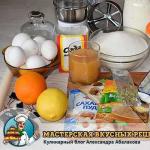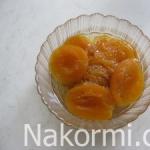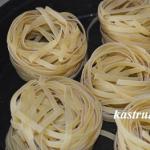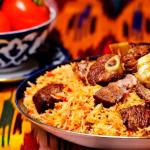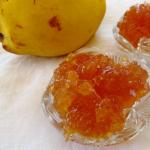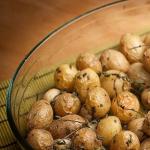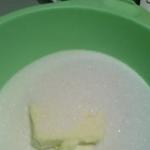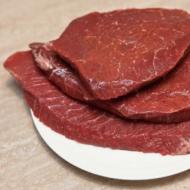
Wuchang plastic rice is fake. Carefully! Chinese plastic artificial rice on sale! How to distinguish real rice from fake rice at home: lump test
Plastic rice, news newspapers and television are full of such headlines. The worst thing is that this is true. The Chinese have become completely lazy. Instead of growing rice in the fields, they learned to fake it. Yes, it would be fine if such rice were sold in China, but it is successfully sold to Russia. In China, fake rice is sold with ingredients labeled. Such rice enters the territory of the Russian Federation with documentation indicating the content of impurities of plastic, starch, and potatoes. Unscrupulous “repackers” of products buy fake rice.
What happens is that low-quality rice is simply packaged in packaging that doesn’t say a word about plastic, potatoes, or starch. This is how plastic rice from China ends up on shelves.
Plastic rice how to distinguish
As you already understand, the authenticity of rice cannot be determined by the packaging. Let's figure out how to buy real rice:
Plastic rice true or false
Rumor has it that these are stories and there is no fake rice. We invite you to watch the video and find out whether this is true or a myth.
The problem is not only in China and Russia, fake rice has spread all over planet Earth. Be vigilant - check what you eat.
For those who are not in the know, here is the news from the Korean Times. It turns out that plastic rice is produced in China, which is shipped abroad in large quantities.
This rice is not entirely synthetic. It is based on potato starch, to which plastic is added so that it holds the desired shape. Eating a portion of this rice is equivalent to eating a plastic bag. Therefore, before eating rice, it is advisable to check it. Perhaps such a miracle of the world is already being produced here. We have prepared several tests to help you determine the quality of rice.
Rice Quality Tests
Water test
Add a large tablespoon of rice to a bowl of cold water and stir vigorously. If the rice settles to the bottom after a while, everything is fine. If the grains float on the surface, be careful!
Fire test
Light the rice with a match. The fake one will immediately catch fire and smell like burnt plastic!
Mortar test
Grinding a few grains in a mortar turns real rice into white flour. The artificial rice will turn out to be a slightly yellowish mass.
Mold test
If you want to know if your cooked rice is safe, place some in an airtight container in a warm place. After a few days, mold will appear on real rice. But fake rice will be as fresh as fresh.
We have all heard more than once about products that are often counterfeited. Shrimp, chocolate, cottage cheese, rice...
We'll talk about the latter today. For those who are not in the know, here is the news from the Korean Times. It turns out that plastic rice is produced in China, which is shipped abroad in large quantities. This rice is not entirely synthetic. It is based on potato starch, to which plastic is added so that it holds the desired shape. Eating a portion of this rice is equivalent to eating a plastic bag. Therefore, before eating rice, it is advisable to check it.
Perhaps such a miracle of the world is already being produced here. We have prepared several tests to help you determine the quality of rice.
Rice Quality Tests
Water test

Add a large tablespoon of rice to a bowl of cold water and stir vigorously. If the rice settles to the bottom after a while, everything is fine. If the grains float on the surface, be careful!
Fire test

Light the rice with a match. The fake one will immediately catch fire and smell like burnt plastic!
Mortar test

Grinding a few grains in a mortar turns real rice into white flour. The artificial rice will turn out to be a slightly yellowish mass.
Mold test

If you want to know if your cooked rice is safe, place some in an airtight container in a warm place. After a few days, mold will appear on real rice. But fake rice will be as fresh as fresh.
By checking the rice in these ways, you can find out whether you purchased a quality product.
Let's look at the fake news about "Plastic Rice".
The myth is popular because is based on the exploitation of the theory “in China everyone eats rice all the time.” This is common illiteracy typical of the target audience of such fake news.
For example, here:
There are many variations, because... they write according to the same template, but without facts - let’s focus on the key ones.
> China is believed to have been producing this fake rice for about 4 years now.
This has been happening for a long time (this needs to be mentioned so that people immediately stop buying the target product, without the possible excuse “it just appeared, so until we get to it...”, and also to emphasize that “in the terrible life there, this is the norm, yes, such a terrible country."
> Every year in China, 800,000 tons of real Wuchang rice are produced (this is such an expensive variety for the locals) and 10,000,000 tons of fake rice, with the addition of plastic.
Regular from "plastic" - only 8%. Considering that this is “one brand”, the plastic one should then eat everything. And for years now. “Plastic” is not the only option - since the news is fictitious, potatoes, rubber, or resin are added to the “bad fake synthetic” rice.
As is clear, in the text, in order to form the desired opinion (I have written about this many times), due to the stupidity of the audience, a clearly formulated conclusion is needed in the finale. This one, for example:
> China has begun mass production of plastic, fake rice -
and it causes very serious health problems.
> And while in overpopulated China, no one cares about plastic used in food
> A group of so-called “plasticizers”, i.e. chemicals used in the production of plastic and fake Wuchang rice were banned in the EU back in 2005. But do you trust the government and stores of the country you live in?
> So the best way to protect yourself and your family is to simply not buy rice imported from China.
Those. everything is clear - despite the fact that in the text “already 4 years” - in the same place “China began”. Another myth is emphasized - about “overpopulation” (the subtext is “they have nothing to eat there”), as well as the standard “about commies who hate their people” - no one cares about plastic. It is always mentioned that in normal countries this has long been prohibited. A must (for better memorization) is the question, “But do you trust the government and stores of the country in which you live?” After all, the audience is stupid and controlled by fear, and also needs reinforcement of its narcissism: “I’m smart, I won’t get caught.” Well, the final clear order is not to buy such and such products.
Everything according to the absolute canons of information dumping with a clear goal.
Now let's sort it out.
Not a single figure from the article is looked for - nowhere are there any such references to unimaginable volumes (millions of tons!). As well as about the beginning of production and its location (just figure out what scale the factories should be). Those. there is nothing at all. OK, let's follow the links.
We find an article on Shanghaiist (a resource for North Chinese crackers):
The article is author's, i.e. as a blog entry. The author is a US citizen, an "external correspondent". In this article, rice is already made from potatoes, sweet potatoes (sweet potatoes in China are cheap, cheaper than rice - that is, this article already focuses on a different audience! If in Russia you write that fake cheap rice is made from sweet sweet potatoes, no one will believe it, Sweet potatoes are expensive - but in China it’s the other way around! The text is super adaptable, however) and synthetic resin. OK, to hell with it, with the “where did you see the white transparent rubber”, let’s look further.
> "As part of AVA's routine surveillance, imported rice is regularly inspected and sampled to ensure compliance with our food safety standards and requirements," a spokesman from the Agri-Food & Veterinary Authority (AVA) told The Straits Times after rumors surfaced that the fake rice had entered Singapore.
> "We have not received any feedback on fake rice."
Those. there were rumors, moreover, in Singapore. A check showed that these were rumors - there is no such rice. There are also no reports of cases of its purchase - not rumors, but actual ones, with the presentation of such rice.
> The Malaysian Agriculture and Agro-based Industry Ministry likewise denied receiving any reports about the resin-laced grains, but said if it were to have gotten into Malaysia, it would most likely be sold at small shops rather than large supermarkets.
Those. They, too, have not come across such rice, they can only assume that if it can be somewhere (no cases have been recorded), then somewhere in small shops. This is logical - you can say for any non-existent product that it doesn’t exist at all, but maybe somewhere you can buy it second-hand.
2011
The American publication starts with a proven technique - for the news to inspire more confidence, you need a photo or video. There are no photos or videos of plastic rice, so the 2011 article is accompanied by a photo of “a man holding rice in his palm” from 2009, from the article “China will soon begin producing genetically modified rice.” Do you feel what a victory? "Here's proof about plastic rice - a photo of regular rice that will soon become GMO." Absurd, but this is modern news, these are the high standards of American journalism.
So what's in the text?
> China allegedly makes fake rice, reported The Korea Times
> The original source is a report obtained by Singapore media, said The Korea Times.
> Allegedly, some Chinese companies produce fake rice by mixing in plastic. This fake rice is then massively sold on the Chinese market.
The English word allegedly, if anything, is translated as “allegedly”, “according to unconfirmed data”, “seemingly”.
That is, information appeared in some Singaporean media that this supposedly happens. This was republished by the South Korean media, and the American media referred to it. Even worse:
> The Korean-language Weekly Hong Kong in Hong Kong quoted Singapore media that “Fake rice made out of plastic is massively sold on the Chinese market.”
The resulting chain is epic - Russian media reprinted an author's article from a "popular science publication", which refers to an American media outlet, which refers to an article 5 years ago in another American media outlet, which refers to a Korean newspaper from Hong Kong, which refers to an unnamed Singaporean source, which (drum roll) SUGGESTS THAT THIS COULD COULD BE HAPPENING.
Well, what a fucking circus with horses.
Don’t you think this scheme is extremely familiar, well, like “in 5 blogs and some unknown news sites they wrote that, according to anonymous sources, 174 special forces of the GRU General Staff were killed in Ukraine, and now in official German media like DW.com article “So, according to multiple evidence in the media, Russia is suffering a military defeat in Ukraine”?
Further in the text, it’s clear from the starting assumption that it’s possible, it’s not excluded, just look, probably there is such rice (I consciously do not focus on the simplest question “why make multi-component artificial rice if natural one costs pennies and there are heaps of it? "), conclusions are drawn that it is harmful.
Well, in general, the topic has been sorted out - and now a hint where this comes from.
There is a whole industry called "making dummies for shop windows." Obviously, sales from the presence of a weight and size model of food in the display case improve, especially if it looks identical to natural food. But no one will prepare dozens of dishes just for display. That's why plastic is exposed. Yes, you can buy this at retail - it’s just a fake food, they don’t eat it. At least they produce it.
For example, the Japanese TV channel Fuji TV takes a video of a Vietnamese showing that it is impossible to make food from dummies of eggs, because the dummies are plastic:
What does the American jaundice channel LiveLeak do? That’s right, within the framework of scratching the template about creepy China, it presents it all as “This is what they eat in China.”
And this happens on an ongoing basis. Any Asian rumor is taken, from any country - from Laos to Japan - followed up and “and that’s all you need to know about the horrors of China.” South Korean, Singaporean, Japanese private media will easily, with pleasure and for a small profit, publish the “horrors of communist China”, because They are a little bit bothered by the progress of China - after all, they used to be “special Asians, advanced, looking with laughter at the red-starred peasant cattle.”
From the same opera, for example, there are tales about “terrible recycled oil from the trash heap, which is used to cook again.” In China, they actually collect the oil in separate tanks (the blue ones are usually like this) after preparation (once a day a woman in a street car will drive up to a street kitchen, pick up the blue barrel and put a new one), because this oil is used for diesel for buses. It was invented about the “terrible Chinese waste oil” because it is very painful that in all American and world fast food, where everything is fried in fat, the oil is changed only when it turns black, and many people joked very funny about this topic about 15 years ago. And then large corporations, like Mac, chipped in and turned the laughter in the right direction - have you heard about “Today is the day of the year when they change the oil in the grill at McDonald’s”? We haven’t heard of it, but it was popular. Now there is silence about this - but can you imagine the volumes of oil needed to operate an industrial deep fryer? It's not "fry noodles", it's a lot. And it needs to be changed often. Only there is silence about this - thanks to thorough brainwashing, the mention of “waste oil” is already associated with something else.
Or "scary Chinese synthetic egg sausage" (popular image on the Internet):
But the original is from 2006, “Japanese egg roll”.
Well, that is. You can put “crab sticks” made from pressed ground fish in a salad, although they are not crab. And if you make the same composition in the form of a sausage, and select the color on the cut to “like an egg”, and start selling in Japan, then this is “creepy China counterfeiting eggs, all made of plastic.”
What would you like to say about this?
Big congratulations, of course, to the friendly and highly intelligent team of Vestey.Ru, who have gone so far as to repost articles of no one’s category in the category “horror, horror, what is going on” from resources where they border on “Seven ways to catch a crocodile in the Arctic” and “The cancer will go away - just one tablespoon of THIS MEDICINE on an empty stomach is enough...”
But I have special questions for those who are willing to do this.
Do you really think that a country of one and a half billion people will eat plastic? Well, with a food culture of several thousand years, just a dozen and a half main cuisines and trends?
Can you imagine the cost of food in China?
Try to think about how the production of mass counterfeits of penny food, moreover, from expensive components, and illegal ones, will pay off - look at the link http://rg.ru/2009/01/23/melamin.html to understand what the risks are - and the manufacturer, and the owner, and representatives of local authorities - i.e. No one will cover this production, they will simply destroy it along with the others, and that’s all.
Are you not alarmed that in “plastic-eating China” the indicators of diseases - from cancer to diabetes - as well as life expectancy (moreover, active, and not living) - are significantly better than those of the “successful people who eat only organic green gluten-free low-fat foods living in countries with normal medicine and leading a healthy lifestyle"? What exactly is the term of active life - up to 70 years? Do you really think that someone is forcing the Chinese to work at 60? I will disappoint you - they are bored just sitting still, they are cheerful at this age. Massively. On simple food like noodles and duck (yes, by the way, in China they eat more noodles than rice, suddenly).
No, really, it’s not alarming that Maskov’s office unit, who eats exclusively prestigious Western food, has only been undergoing treatment since the age of 40, essentially with short breaks for work? He barely crawls, imitating activity by using stimulants. Do you know the main reasons for quitting on your own without moving to another job in high-tech companies, where 20-40 years old, income is 100-300 thousand? Heart and cancer. But everyone drinks coffee in prestigious paper cups, 500 rubles per cup, without thinking where this company, anywhere in the world, gets dozens of varieties with identical taste, and such a cool foam with zero cream content, but with surfactants (by the way, when it was discovered - well, that the same substances are added for “sustainable foam in prestigious coffee” as in washing powder, a rumor was immediately started that “in Russia, washing powder is added to bread by order of the government so that the dough rises faster”) . They eat organic sandwiches that you can forget for two weeks and they won’t even dry out, because... there is alcohol and soy flour (https://roscontrol.com/product/harrys-american-sandwich/). With prestigious Norwegian salmon, which is raised by blocking the fjord and dumping truckloads of unsorted urban waste - from batteries to used gaskets. And then the questions - how is it, doctor, what does “three months” mean, but I ate expensively and prestigiously?
In China, in any general store in the evening, grandparents of 70-80 years old will be in the squares and streets either dancing, or practicing tai chi, or tango. They also varnish themselves with beer so that they then have to transport the cans by truck. In Moscow, a 45-year-old can walk up the stairs from first to third by himself - whisper “wow, he keeps himself in shape, yes, what does a successful person mean, I wonder how much he spends on this, oh, I wish I could earn as much as he does... "
With all this, the “successful European countries” are represented without exception and en masse by passive-apathetic old women living out their lives. Eurohome for the elderly. With natural population decline. And in China, on the contrary, there is an increase. Even with existing birth restrictions. On plastic, yes.
Don't all these discrepancies seem strange? Well, it should be the other way around, right?
Think about it.
In the picture there is a photo of a Chinese “hot pot”, often passed off as either an Uzbek or a Kazakh photo with the text “this is how they live where there is no Russian world.” Everything is plastic, yeah. Well, you get the idea.
There are a great many types of rice. And each is suitable for very specific purposes. One is good for filling, the other for porridge, the third for pilaf. The Chinese even adulterate rice on an industrial scale. They do this enough: they mix potato starch with synthetic resins and mold “grains”. How to choose a quality product for your table?
There are a great many types of rice. And each is suitable for very specific purposes. One is good for filling, the other for porridge, the third for pilaf. The Chinese even adulterate rice on an industrial scale. This is done quite simply: they mix potato starch with synthetic resins and form “grains”. How to choose a quality product for your table?
Only for pies
When you come to the store, don’t be too lazy to look at the rice through the transparent part of the packaging. For these reasons, it is better to purchase it in a plastic bag rather than in a cardboard box. However, the manufacturer, who has nothing to hide, will definitely make a “window” in the cardboard, through which the buyer can easily see the contents.
“If there are a lot of fragments among the grains, you should put the pack aside - they will spoil the dish, since they will boil faster and more strongly. If the manufacturer worked honestly, he would separate them and sell them as crushed rice - such a product is acceptable for sale according to GOST. But in fact, this is waste production. You can’t make good porridge from it,” says Alexander Miller, nutritionist, candidate of medical sciences.
It’s bad if there are a lot of chalk-white grains in the package. These are the so-called chalky rice kernels - unripe grains of a powdery, opaque consistency. They are more fragile and worsen the taste of the dish. In a word, this rice is clearly not of the highest quality - it will be used as a filling for pies, but as a side dish it will only spoil the mood.
It is very important that there are no yellowed rice kernels in the pack. This is the official name for grains and their fragments, which even when cut are yellow. Yellowness means that before packaging, this rice was stored wet and in large piles - under such conditions, fungi grow that produce harmful mycotoxins, including carcinogens.
Shake the package of rice thoroughly several times, stirring the grains - this is the only way you can really see them. Good rice should always be, as they say, grain to grain, and the grains themselves look like frosted glass. In this case, this is definitely not a rice “double” cobbled together by the Chinese.
No need to rush
In recent years, so-called parboiled rice has begun to be sold. Many people think that it is intended for quick cooking, because other steamed cereals sometimes just need to be poured with boiling water. But with rice it's different. The steamed version needs to be cooked even longer than usual - at least 30 minutes; it is good for a side dish and has a more pronounced taste.
“Fatted” rice, which supposedly cooks quickly, is also a myth. Thanks to flattening, rolled oats, pearl barley and some other cereals actually cook faster. But the rice does not flatten, but splits when pressed - few consumers know about this. Therefore, the inscription on the packages “instant rice” is very conditional: the fastest rice cooks in 8-10 minutes, and not 1-2, like other cereals with the same inscription. To do this, the grains are thinned by grinding. By the way, in these 10 minutes you can cook the famous aromatic basmati rice - because its grains are thin and long, like needles.
But even darker and longer “needles” of wild rice need to be simmered over low heat for a record long time - 40-60 minutes, until they absorb water and their tips crack, exposing the white inside. It is better to take this kind of black rice separately, and not mixed with regular grains, as it is often sold: when the white rice is boiled, the “needles” will still be hard. For dishes made from two of these rices, start with wild rice and add white rice later.
Although you can buy brown, red and even black rice today, be aware that the insides are white.
The color of the grains is given by the fruit and seed coats, which are rich in B groups and antioxidants. When they are removed, and the grains are then polished, freeing them from the remnants of the shells and the germ, the rice becomes completely white - the way we are used to. It is good in cooking, but from the point of view of benefits it is bad, because after peeling there are no useful substances left in it.
By the way
What kind of rice should I use for porridge or soup? Look at the variety.
Arborio is a round or medium grain Italian rice. When cooked, it absorbs the taste of other components of the dish. Suitable for porridge, risotto and paella.
Basmati is a long grain rice grown at the foothills of the Himalayas in India and Pakistan. Basmati has an aromatic taste that makes it considered the king of rice. When cooked, the grains elongate without boiling or sticking together. Good for side dishes and oriental dishes, including pilaf.
Wild rice has very thin, almost black and shiny “needles.” Its homeland is the North American Great Lakes region. Suitable for salads and side dishes.
Jasmine is a long grain rice from Thailand. The grains retain their shape but stick together. It is best to cook it covered.
Indica is a long grain rice that is the most popular in the world. Doesn't boil over, doesn't stick together - for side dishes, pilaf and salads.
Krasnodar - round or medium grain rice. Suitable for soups and milk porridge.
Japonica - round grain rice. It doesn't boil, but sticks together. Ideal for sushi.
What does the packaging tell you?
White short grain rice
According to the form, rice can be long-, medium-, short-grain and crushed. Long is good for side dishes, round and medium are better for porridges.
Based on color, white (polished) rice, brown, red and black (hulled, but not polished types of rice) are distinguished.
First grade
The only characteristic of quality is the grade. There are extra, highest, 1st, 2nd and 3rd grades. However, the last two are rarely found in stores - they are used in industrial cooking, stuffed into rice pies, used on rice cereal, etc.
Krasnodar/indica
etc. (see "By the way")
This is the variety, not the place of origin, of the rice. Even Krasnodar rice can be grown in China or Egypt (read the label carefully, focusing on the “Country of Origin” column. By the way, very often rice is produced in one country, but packaged in a completely different one - this is also indicated).
Top quality
This and similar labels give the impression of a high-quality product, but in reality they mean nothing, since they are not regulated by law.
GOST 6292-93
According to GOST, polished white and rice are produced, other types are produced according to specifications.

